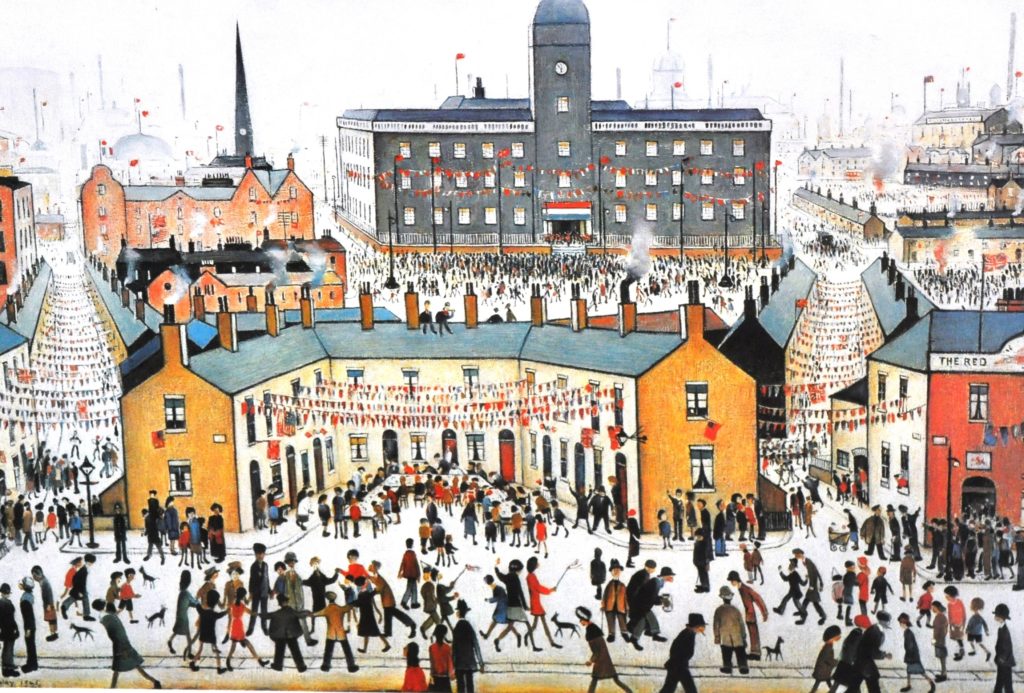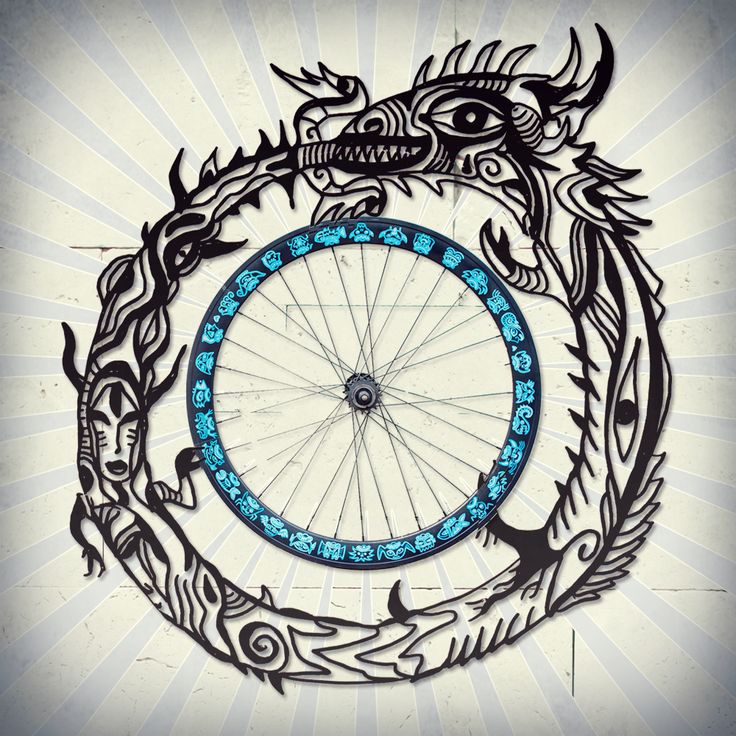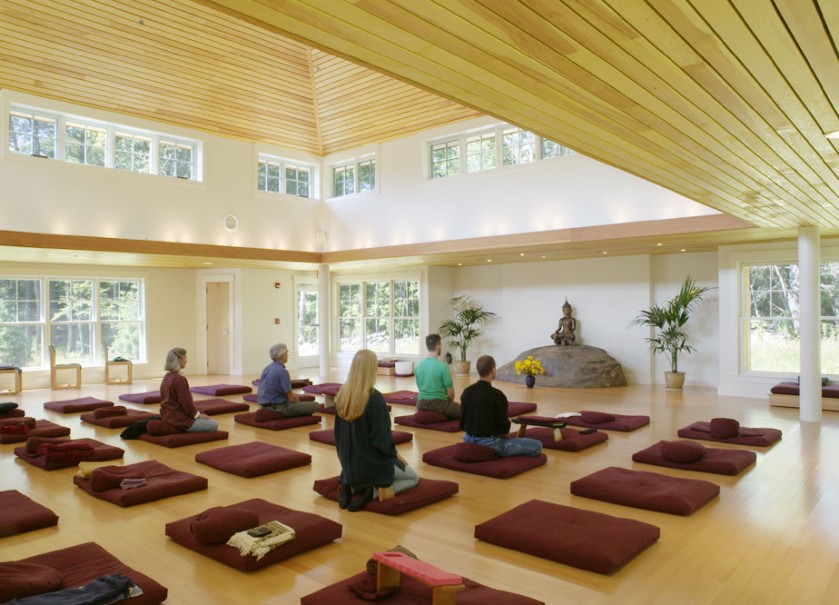Preceded by Mind
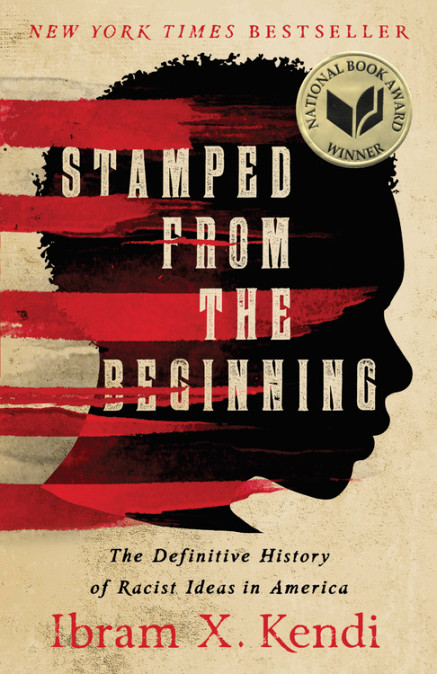 I’ve started reading the book my CDL White Awake buddies will be discussing next month — Stamped from the Beginning: The Definitive History of Racist Ideas in America, by Ibram X. Kendi — and I just want to say, in case anyone is confused about why I keep posting stuff about racism on this site: This is Dharma.
I’ve started reading the book my CDL White Awake buddies will be discussing next month — Stamped from the Beginning: The Definitive History of Racist Ideas in America, by Ibram X. Kendi — and I just want to say, in case anyone is confused about why I keep posting stuff about racism on this site: This is Dharma.
What do I mean?
Here is Gil Fronsdal’s translation of the first line of the Dhammapada:
“All experience is preceded by mind, led by mind, made by mind.”
And here’s an excerpt from the preface of Stamped from the Beginning:
“Racist ideas have done their job on us. We have a hard time recognizing that racial discrimination is the sole cause of racial disparities in this country and in the world at large.
“I write we for a reason. When I began this book, with a heavy heart for Trayvon Martin and Rekia Boyd, I must confess that I held quite a few racist ideas. Even though I am an Africana studies historian and have tutored all my life in egalitarian space, I held racist notions of Black inferiority before researching and writing this book.
“Racist ideas are ideas. Anyone can produce them or consume them, as Stamped from the Beginning‘s interracial cast of producers and consumers show. Anyone–Whites, Latina/os, Blacks, Asians, Native Americans–anyone can express the idea that Black people are inferior, that something is wrong with Black people. Anyone can believe both racist and antiracist ideas, that certain things are wrong with Black people and other things are equal.
“Fooled by racist ideas, I did not fully realize that the only thing wrong with Black people is that we think something is wrong with Black people. I did not fully realize that the only thing extraordinary about White people is that they think something is extraordinary about White people.
“I am not saying all individuals who happen to identify as Black (or White or Latina/o or Asian or Native American) are equal in all ways. I am saying that there is nothing wrong with Black people as a group, or with any racial group. That is what it truly means to think as an antiracist: to think there is nothing wrong with Black people, to think that racial groups are equal.”
***
Read the book. And think about it.
Your Mind Already Moves
I’m sorry it has taken me so long to post after coming back from the Nine Bodies retreat, but the retreat — as well as the meeting I had with Phillip the day after — were such powerful experiences that I’ve needed all this time just to start to let it soak in.
But I do want to keep my promise to the Sunday Sangha, so here’s the link I mentioned to the website where you can find a video recording of Phillip Moffitt introducing the Nine Bodies teaching, as well as audio recordings of guided meditations for accessing each of these Bodies (levels of consciousness).
The retreat was very unusual. (Almost no dharma talks, for example, but lots of guided meditation.) It was very personal. (Both Phillip and Dana were present during all but a few of the sits.) And it was very helpful for me and the development of my practice.
I can’t really say much more than that. So I’ll just leave you with this excerpt from the book:
“Just reading about and reflecting on the Nine Bodies can make a difference in your self-understanding and how skillfully you respond to various challenges in your life…
“Your mind already moves in and out of these different Bodies, and they are continually affecting your physical body, attitude, perception, and mental capabilities. So just having the ability to recognize the underlying energies of the various Bodies can bring equanimity to the mind.”
***
Check it out. Awakening Through the Nine Bodies: Explorations in Consciousness for Mindfulness Meditation and Yoga Practitioners, by Phillip Moffitt.
Toward Which My Journey Tends
I leave on Tuesday (May 29) for the Nine Bodies retreat at Spirit Rock, then I’m staying over to meet with Phillip the next day, so I won’t get back until the following Tuesday, (June 5). Look for my next post sometime later that week.
In the mean time, I leave you with this selection from Invisible Cities, by Italo Calvino, the guide book I always consult before traveling:
The Great Khan’s atlas contains also the maps of the promised lands visited in thought but not yet discovered or founded: New Atlantis, Utopia, the City of the Sun, Oceana, Tamoé, New Harmony, New Lanark, Icaria.
Kublai asked Marco: “You, who go about exploring and who see signs, can tell me toward which of these futures the favoring winds are driving us.”
“For these ports I could not draw a route on the map or set a date for the landing. At times all I need is a brief glimpse, an opening in the midst of an incongruous landscape, a glint of lights in the fog, the dialogue of two passersby meeting in the crowd, and I think that, setting out from there, I will put together, piece by piece, the perfect city, made of fragments mixed with the rest, of instants separated by intervals, of signals one sends out, not knowing who receives them. If I tell you that the city toward which my journey tends is discontinuous in space and time, now scattered, now more condensed, you must not believe the search for it can stop. Perhaps while we speak, it is rising, scattered, within the confines of your empire; you can hunt for it, but only in the way I have said.”
Already the Great Khan was leafing through his atlas, over the maps of the cities that menace in nightmares and maledictions: Enoch, Babylon, Yahooland, Butua, Brave New World.
He said: “It is all useless, if the last landing place can only be the infernal city, and it is there that, in ever-narrowing circles, the current is drawing us.”
And Polo said: “The inferno of the living is not something that will be; if there is one, it is what is already here, the inferno where we live every day, that we form by being together. There are two ways to escape suffering it. The first is easy for many: accept the inferno and become such a part of it that you can no longer see it. The second is risky and demands constant vigilance and apprehension: seek and learn to recognize who and what, in the midst of the inferno, are not inferno, then make them endure, give them space.”
But Not the Only Way
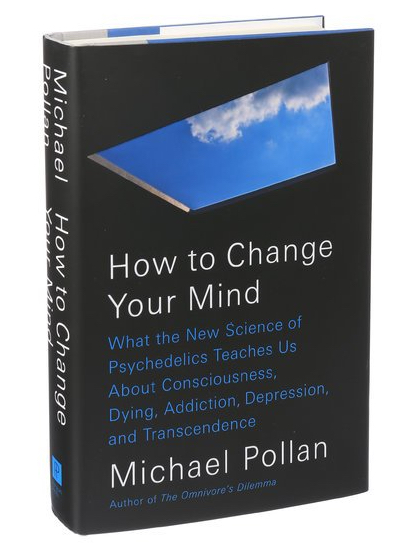 After reading this Sunday’s New York Times Magazine adaptation of Michael Pollan’s new book, How to Change Your Mind: What the New Science of Psychedelics Teaches Us About Consciousness, Dying, Addiction, Depression, and Transcendence…I immediately went online and bought the book.
After reading this Sunday’s New York Times Magazine adaptation of Michael Pollan’s new book, How to Change Your Mind: What the New Science of Psychedelics Teaches Us About Consciousness, Dying, Addiction, Depression, and Transcendence…I immediately went online and bought the book.
Not because I have any interest in taking psychedelic drugs or undergoing psychedelic therapy or doing anything else “psychedelic” (well, maybe wearing an old tie-dyed T-shirt). But I feel compelled to read Pollan’s book because his description of the altered states of consciousness he experienced while under the influence of psilocybin — and their lasting effect — is so resonant with some of my own experiences in meditation that…well…it kind of blows my mind!
I hesitate to excerpt the Times article (rather luridly titled: My Adventures with the Trip Doctors) because I think it require a full reading. But I will quote a part of what struck me the most:
“Losing myself in the music became a kind of rehearsal for losing myself, period… I became identical to the music, a word that doesn’t begin to describe the power of what these unearthly vibrations were, or explain how they somehow lifted up and carried me beyond the reach of all suffering and regret…
“The sovereign ego, with all its armaments and fears, its backward-looking resentments and forward-looking worries, was simply no more, and there was no one left to mourn its passing. And yet something had succeeded it: this bare, disembodied awareness, which gazed upon the scene of the self’s dissolution with benign indifference. I was present to reality but as something other than my usual self. And although there was no self left to feel, exactly, there was a feeling tone, and that was calm, unburdened, content. There was life after the death of the ego.”
Homework!
 I’ve been doing the “Required Advanced Reading” for Phillip Moffitt’s next retreat, titled: Meditating on the Nine Bodies: A Practical Map for Insight Practitioners (which I’ll be attending at the end of this month.)
I’ve been doing the “Required Advanced Reading” for Phillip Moffitt’s next retreat, titled: Meditating on the Nine Bodies: A Practical Map for Insight Practitioners (which I’ll be attending at the end of this month.)
The requirement is to read the first six chapters of Phillip’s new book, Awakening through the Nine Bodies: Explorations in Consciousness for Mindfulness Meditation and Yoga Practitioners.
It’s pretty unusual for there to be a homework assignment(!) required to attend a retreat, but I think this is going to be a pretty unusual retreat.
(I already read the book when it first came out last fall. Let me just say: It’s not a quick read. But if you’re interested, it’s worth it!)
The “Nine Bodies” refers to nine levels of consciousness that (according to these teachings) can be accessed/experienced through meditation. These levels are called: Physical Body, Vital Body, Emotional Body, Etheric Body, Astral Body, Intuitional Body, Spiritual Body, Divine Body, Cosmic Body.
The book includes meditation instructions for accessing each of these Bodies. Here’s an excerpt from the first one:
“Begin with simply practicing mindfulness of the wind element manifesting as breath in the Physical Body. Be mindful of any physical sensations that tell you that you are breathing; breath is occurring. You may feel the wind element as pressure, tingling, or vibration, or as an in-and-out or rising-and-falling movement.
“When you are able to consciously feel these body sensations directly without commenting on them or trying to control them through your thoughts, you are directly accessing the Physical Body. Confirm whether this is true for you. You will see that indeed consciousness knows it knows physical sensations. Instructing you to do this confirmation may seem unimportant, but the ‘knowing you know’ aspect of consciousness builds strength and confidence of mind, which helps the mind develop its more subtle capacities for attention…
“One way to describe the felt sense of being in the Physical Body is as ’embodied consciousness.’ Another is feeling ‘grounded in the body.’…. From this embodied consciousness you can develop a felt sense for the nervous system based on the principle of being grounded.
“You will discover that your attention can be grounded in any conscious experience, not just the body, if you cultivate the intention to rest attention on that experience.
“Just as the nervous system has a parasympathetic relaxation response when it realizes it is safely resting on Earth, which in turn calms and clears the mind, this calming relaxation response is generated when accessing each of the Bodies….
“From the practical perspective, it is very helpful to be able to access the Physical Body in daily life when the mind is racing and emotions are strong. I recommend that you repeatedly return to establishing mindfulness of the body ‘within the body’ throughout your day. It provides a beneficial break for an overly active mind or a mind that is habitually tuning out.”
***
Interested? You can find recordings of these and other instructions for accessing the Physical, Vital, Emotional, Etheric, and Intuitive Bodies by clicking here. Some are led by Phillip Moffitt, other by his co-teacher, Dana DePalma. Enjoy!
What We Talk About When We Talk About….
 Mirabai and Ram Dass have just written a new book: Walking Each Other Home: Conversations on Death and Love (which is coming out soon), so of course we talked about this while I was visiting with her.
Mirabai and Ram Dass have just written a new book: Walking Each Other Home: Conversations on Death and Love (which is coming out soon), so of course we talked about this while I was visiting with her.
And (as I posted last week), Bhikkhu Analayo has just come out with a new book: Rebirth in Early Buddhism & Current Research, so we talked about that too.
Also, a friend of Mirabai’s had recently died (Bobo Legende, who had also written a book just before she died: Not What I Had Expected).
So as you can see, there was kind of a theme going on. Which was quite wide-ranging. And not in any way at all sad.
For example, we also talked about this little gem: The Gentle Art of Swedish Death Cleaning: How to Make Your Loved Ones’ Lives Easier and Your Own Life More Pleasant (by Margareta Magnusson).
Here’s an excerpt:
“Death cleaning…it is a term that means you remove unnecessary things and make your home nice and orderly when you think the time is coming closer for you to leave the planet…
“I have death cleaned so many times for others, I’ll be damned if someone else has to death clean after me…..
“I am now somewhere between eighty and one hundred years old. I take it as a responsibility of my old age to tell you about my experiences, because I believe this philosophy of death cleaning is important for all of us to know….
“Do not ever imagine that anyone will wish–or be able–to schedule time off to take care of what you didn’t bother to take care of yourself. No matter how much they love you, don’t leave this burden to them.”
***
Sadhu. Sadhu. Sadhu.
If You’re Interested….
 Bhikkhu Analayo has just come out with a fascinating new book: Rebirth in Early Buddhism and Current Research, which I HIGHLY recommend if you’re at all interested in the topic…which I totally am, ever since I heard Joseph Goldstein play a recording made in the 1970s of ancient Pali chants recited spontaneously by a little 2-year-old boy (now grown up), who Joseph knows personally (as do many of the other dharma teachers I’ve sat with).
Bhikkhu Analayo has just come out with a fascinating new book: Rebirth in Early Buddhism and Current Research, which I HIGHLY recommend if you’re at all interested in the topic…which I totally am, ever since I heard Joseph Goldstein play a recording made in the 1970s of ancient Pali chants recited spontaneously by a little 2-year-old boy (now grown up), who Joseph knows personally (as do many of the other dharma teachers I’ve sat with).
I was kind of neutral on the subject until I heard that sweet little voice!
(Links to the recordings can be found here under the boy’s name: Dhammaruwan.)
Dhammaruwan (now Bhikkhu Samadhikusala) and those tapes feature prominently in Bhikkhu Analayo’s new book:
“…it occurred to me to take a closer looks at recordings of Pali chants recited spontaneously and from memory by a small Sri Lankan child, whom I knew from the time I lived in Sri Lanka myself in the 1990s, by which time he had already become an adult. This brought to light support for his recollection of having learned these chants in the long-distant past, making it clear that they deserved a study more detailed than is possible within he confines of an article.
“In order to contextualize my findings, I also started to read up on various areas of research related to rebirth. This in turn made me realize that I had entered a minefield of at times firmly entrenched opinions regarding rebirth, leading me to investigate historical antecedents for the current debates on this topic. These four trajectories inform the four chapters of the book.”
Check it out!
And So On…
More from Turning the Wheel of Truth by Ajahn Sucitto:
“When something new arises in your life, if it’s pleasant and wished for, there is happiness — and then comes the need to sustain that happiness or the wish not to be parted from it. When something beautiful to behold arises, how long can you continue to be thrilled by it? A few minutes? Can you make it through an hour before it starts to pall? How about a day, let alone a year?
“Of course, we live with many options. If we get bored with looking at a painting, we read something; when that becomes boring, we go for a walk, perhaps visit a friend and go out for dinner together, then watch a movie. If this routine gets tedious, we might attempt to regress into our past life, pursue astral travel, then write a book about it…and so on.
“The pattern is that each new arising, or ‘birth’ if you like, is experienced as unfulfilling. In this process of ongoing need, we keep moving from this to that without ever getting to the root of the process.
“Another aspect of this need is the need to fix things, or to fix ourselves — to make conflict or pain go away. By this I mean an instinctive response rather than a measured approach of understanding what is possible to fix and what dukkha has to be accommodated right now. Then there’s the need to know, to have it all figured out. That gets us moving too.
“This continued movement is an unenlightened being’s response to dukkha. That movement is what is meant by samsara, the wandering on.
“According to the Buddha, this process doesn’t even stop with death — it’s like the habit transfers almost genetically to a new consciousness and body. But even within this life, we can see all these ‘births’ as the same habit taking different forms…
“Our habits prescribe the way we relate to others, and of course they model our own future. This habitual activity is kamma. Its key feature is that its effects don’t die away when the action is completed; it actually changes how we will perceive things and act — it molds our identity. That is, through habitually forming tendencies, our mind gets into and deepens its ruts, and that affects how it works and how it intends….
“If we develop and foster thieving intentions, covetous ‘mental action,’ then we see life and people in terms of what we can get out of them. You know the saying: ‘A thief notices a saint’s pockets.’ On the other hand, if we foster harmlessness and compassion, we see the world very differently….
“Each birth is aimed at getting what is pleasing, getting away from what we don’t like, and finding fulfillment. Birth, therefore, involves a lot of stressful reaching out, holding on, jealousy, possessiveness, and defensiveness. And those same old instincts crop up again in different scenarios.
“Birth is pretty deluding: it always looks like a fresh thing until we’ve learned to look at that shadowy feeling in our heart — the same old compulsive drives, needs, holding on….suffering.
“And in the blur of these drives and needs, the mind that goes through birth, aging, and death assumes ‘that is what I am’. And so it tries to create a self to get out of there or to not be there. But all these creations are more ‘births,’ and more unsatisfactoriness. Frustrating, isn’t it?”
***
Whew! Good thing that’s not the end of the story. Stay tuned.
Dukkha
“Everyone knows the feeling of lack or loss or conflict in their lives: this is what the Buddha called dukkha, often translated as “suffering,” but covering a whole range of meanings and nuances. At times, we feel it as a sense of need, or a dissatisfaction that can vary from mild weariness to utter despair.
“…It is a feeling characterized by a sense that things are ‘out of balance.’ Even if we are physically well and mentally skilled, we can feel disappointed that life isn’t offering us enough, or that we’re not making enough of it or doing enough, or that there’s not enough time, space, freedom….
“Then there’s the sense of ‘too much‘ — feeling overwhelmed, not having enough space, time, and ease. In both cases there’s a continual sense of subtle or gross stress.
“Just reflect upon your activities and pursuits: notice that they involve a constant effort to change or cope with what is disagreeable, or to stimulate well-being. This striving is universal.
“It is worthwhile considering that, however altruistic our actions are, the feeling of unsatisfactoriness is the same. This feeling is what the Buddha pointed out as the dukkha that we can resolve.
“Dukkha is characteristic of objective physical reality, with its disease and death. However, as a noble truth, the term points to something different. It means the subjective sense of stress that isn’t bound to physical reality.
“Sometimes having little is fine or even peaceful in its simplicity; at other times we can feel devastated that there’s a stain on the dining room tablecloth…
“The Buddha is not implying that life is miserable; most things have a mixture of pleasure and pain and neutrality in them. It’s just that human experience is characterized by a constant restless quality of disquiet. It’s like a shadow….
“The Buddha taught dukkha, but also the cessation of dukkha. The particulars of unpleasant circumstances can come to an end or be brought to an end, even if problems then surface in other areas. And the way of meeting conflict and problems can be compassionate, calm, and peaceful in itself. So accepting that life has its dark, problematic side needn’t be depressing.
“Most fruitfully, the kind of suffering that is the mental reaction to a situation, even on an instinctive plane, can be completely abolished. With the ending of that kind of suffering, the mind is clearer and wiser and more capable of effecting positive change in the world of ever-changing circumstances.”
— Ajahn Sucitto, from Turning the Wheel of Truth: Commentary of the Buddha’s First Teaching.
If You Practice Deeply…
Later this month I’ll be spending a few days with my mentor, Lila Kate Wheeler, and I’m getting ready by reading one of the books she edited: The State of Mind Called Beautiful, a collection of talks given by Sayadaw U Panditata at the Forest Refuge (pictured above, where I sat a 5-week retreat at the beginning of this year).
Here’s an excerpt from the book, which I offer with the hope of encouraging you go on retreat!!!
“Only by practicing the Buddha’s teachings and training (Dhamma Vinaya) can one fulfill the intent of the Buddha’s compassion. To gain the benefits of Dhamma Vinaya, the Buddhist texts offer the following four guidelines:
- Associate with a person who is knowledgeable and can teach the Dhamma.
- Hear the correct teachings.
- Engage wise attention, which means directing one’s life wisely, as well as maintaining upright behavior in all circumstances.
- Practice well in accordance with the Dhamma Vinaya.
“These days many people are not well versed in Buddhist literature; they do not apply the teachings correctly. Such people will slip from the correct path. If you’re careful to fulfill these four requirements, your contact with the Dhamma Vinaya will be worthwhile. If you don’t fulfill them, beware, for you could be wasting an amazing opportunity — a human life.
“Meditation practice leads us to gain insight, the eye of wisdom that understands what the Buddha understood and what he was trying to teach.
“Attending intensive meditation retreats fosters maximum depth of practice and exposes you to the guidance of qualified teachers. Retreats, then, support the first, third, and fourth guidelines above.
“On retreat, internal and external purity are easier to achieve than in everyday life. Both of these forms of purity are indispensable for anyone who wants to develop insight…
“If you are at all able to set aside time for a retreat, of course you must encourage yourself to choose that option, even if it means giving up something else, like a vacation. And once you have entered an intensive practice period, please, please, do not waste the opportunity in distraction and laziness. Retreat time is precious. You never know when, or whether, you can come back again!
“If you practice deeply you may encounter the experience of nibbana, genuine knowledge of the Dhamma, and the Four Noble Truths.
“Mediation practice is the one and only way to gain and experience this. There is no other way.”


